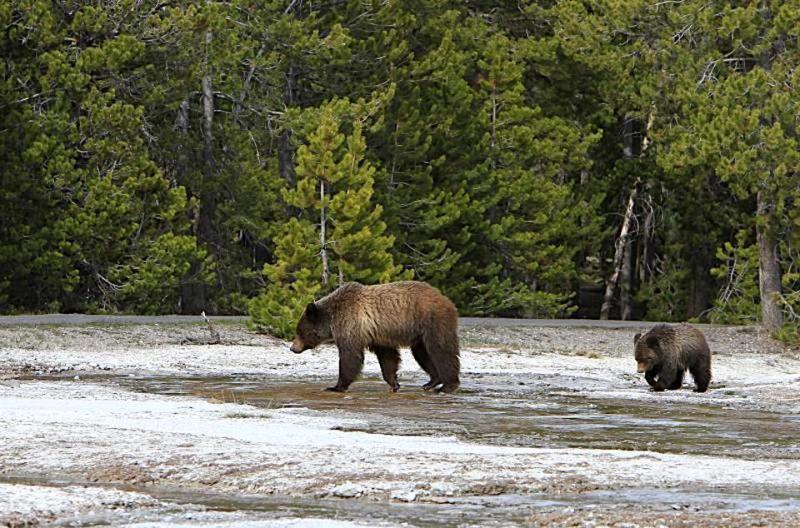
A decision by the Forest Service to expand livestock grazing just north of Yellowstone National Park would endanger the park's grizzly bears/NPS
A decision by the U.S. Forest Service to expand livestock grazing just north of Yellowstone National Park in Montana's Paradise Valley is a death sentence for grizzly bears in the area, according to a lawsuit aimed at overturning the move.
The Forest Service made that decision in 2021, and nine conservation groups went to court this week asking that it be reversed. Several of the allotments are located in designated grizzly recovery zones and within important habitat linkages for bears in the Absaroka-Beartooth Wilderness, according to the groups.
"The U.S. Forest Service has expanded both the livestock grazing area and season, putting the bears at higher risk of being killed in response to conflict with cattle operations," they said in a release. "Greater grizzly bear mortality in areas on the cusp of the Greater Yellowstone Ecosystem will slow the bears’ recovery and keep the Yellowstone grizzly population isolated. Scientists predict that long-term isolation of Yellowstone grizzlies will likely decrease their genetic diversity, which would harm the population’s health and reproductive success."
In addition to challenging the Forest Service’s decision, the 63-page filing also names the U.S. Fish and Wildlife Service as a defendant for using out-of-date scientific information and failing to adequately consider the impacts of the grazing decision on grizzly bears.
“Conflict with livestock is a leading cause of death for grizzly bears in the Greater Yellowstone Ecosystem,” said Jocelyn Leroux, Washington and Montana director with Western Watersheds Project. “Expanded grazing in these allotments is irresponsible and will stymie connectivity between the grizzlies of the Greater Yellowstone Ecosystem and those of the Northern Continental Divide Ecosystem. A better choice would be to keep livestock out of public lands grizzly habitat entirely.”
In recent decades, Yellowstone grizzly bears have also experienced a drastic decline in two of their main food sources - whitebark pine nuts and Yellowstone cutthroat trout. This has led them to consume more meat, which sometimes includes livestock.
“The Forest Service’s decision to increase livestock grazing on public lands in important grizzly bear habitat is completely irresponsible,” said Andrea Zaccardi, carnivore conservation legal director with the Center for Biological Diversity. “Putting livestock in habitat where grizzly bears live is akin to baiting these imperiled animals into conflicts. It’ll only lead to dead bears and thwart the recovery of this threatened species.”
In 2021, the U.S. Fish and Wildlife Service issued a species status assessment that named grizzly bear mortalities resulting from livestock conflicts and lack of connectivity as two of the major factors that threaten grizzly bear recovery. The lawsuit "asserts that by allowing expanded livestock grazing, the Forest Service failed to take these factors into account and relied heavily on an outdated 1998 baseline describing livestock use allowed in the grizzly bear 'recovery zone.' However, in using this baseline the Forest Service failed to consider the current best available science regarding impacts to grizzly bears."
“The science is clear: grizzly bears need safe, livestock-free passage between populations in order to recover,” said Lizzy Pennock, carnivore coexistence advocate at WildEarth Guardians. “With this decision, the U.S. Forest Service ignores both the best available science and its legal responsibility to protect wildlife.”




 Support Essential Coverage of Essential Places
Support Essential Coverage of Essential Places







Comments
If you put livestock producers out of business they will be replaced by 160 acre subdivisions for the uber wealthy coming from outside Montana.